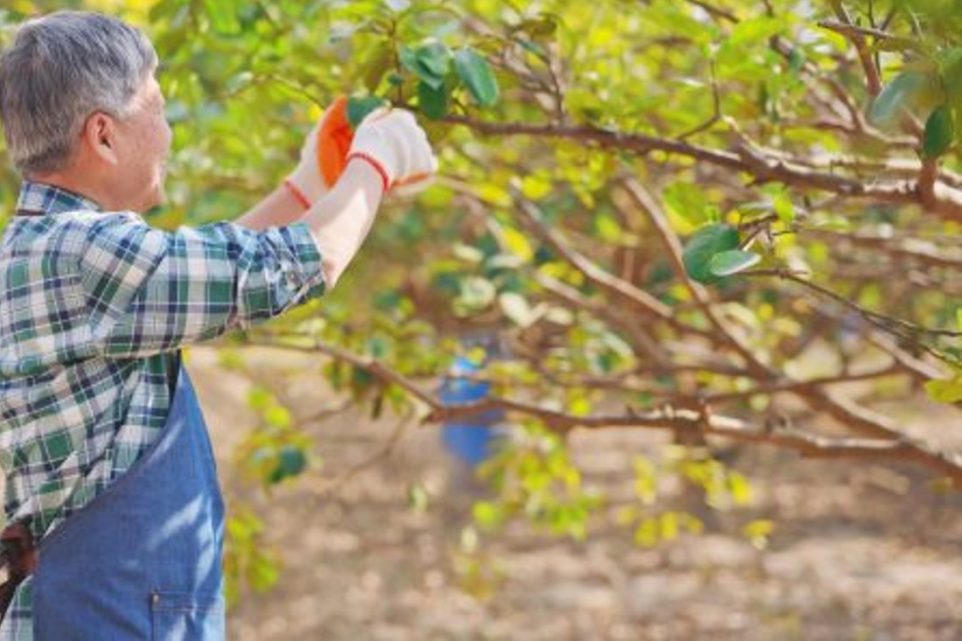How to Prune Maple Tree Branches Properly and Safely

Pruning maple tree branches is crucial for maintaining the health and aesthetics of your tree. It encourages growth, improves air circulation, and helps manage disease risks. However, it’s vital to approach pruning with the right techniques to avoid damaging your tree. Here, we’ll delve into the best practices for pruning maple trees, covering everything from timing and techniques to tool care and safety.
Necessary Tools for Pruning Maple Trees
To effectively prune maple trees, you’ll need the following tools:
- Sharp bypass pruners or loppers: Ideal for cutting smaller branches up to two inches in diameter.
- Electric chainsaw or handsaw: For larger branches.
- Extendable pole saw: Useful for reaching higher branches.
- Safety gear: Including safety glasses, puncture-resistant gloves, and sturdy footwear.
Ensure all tools are clean and sharp to make precise cuts and prevent the spread of disease.
Optimal Timing for Pruning
The best time to prune maple trees is in late winter or early spring before the sap starts flowing and leaves emerge. This timing makes it easier to see the tree’s structure and identify which branches need removal. Avoid pruning during extreme cold or hot temperatures, and never prune when there’s ice or snow on the ground.
Pruning Steps
- Identify Which Branches to Remove:
- Start by removing any dead, diseased, or damaged branches.
- Thin out branches that are crowded or growing at odd angles that disrupt the tree’s natural shape.
- Pruning Technique:
- For large branches, use a chainsaw and make clean cuts at a 45-degree angle away from the trunk.
- For smaller branches, use bypass pruners or loppers to make cuts just outside the branch collar, preserving this important area that helps the tree heal.
- Inspect Your Work:
- After making cuts, step back and review your work to ensure the tree maintains a balanced, natural appearance.
Common Pruning Mistakes
Avoid these common errors to ensure healthy growth:
- Over-pruning: Never remove more than 25% of the tree’s canopy at one time.
- Leaving stubs: Make sure cuts are close to the branch collar without damaging it.
- Improper timing: Avoid pruning during the sap flow period to prevent excessive sap loss.
- Unclean tools: Always sterilize pruning tools between cuts to prevent disease transmission.
Safety Considerations
Safety is paramount when pruning:
- Wear appropriate safety gear: Including gloves, goggles, and protective clothing.
- Be aware of your surroundings: Especially watch for overhead power lines.
- Work with a partner: Especially when using ladders or handling larger branches.
Advanced Pruning Techniques
To further refine your pruning approach, consider these advanced techniques:
- Three-Cut Method for Large Branches:
- Make an initial notch cut on the underside of the branch about a foot away from the trunk.
- Make a second cut from the top a few inches further out than the first, allowing the branch to fall cleanly.
- Finish with a final cut near the branch collar, ensuring a smooth surface that will heal effectively.
- Selective Thinning:
- Focus on branches that interfere with the leader or compete for space, ensuring the strongest and healthiest growth is prioritized.
- Balancing the Tree:
- If some branches are growing more vigorously than others, selectively prune to balance the energy distribution across the tree.
Post-Pruning Care
After pruning, it’s important to care for your maple to encourage healthy recovery:
- Clean Up: Gather and dispose of all cuttings to prevent the spread of pests or diseases.
- Monitor the Tree: Keep an eye on the tree over the following months, watching for signs of stress or disease.
- Water and Mulch: Provide the tree with adequate water and mulch to support its recovery.
Properly pruning your maple tree not only enhances its growth and form but also contributes to its longevity and health. By following these guidelines, you can ensure your maple remains a vibrant and beautiful feature in your landscape for years to come.
Decades of Combined Expertise
Best Buy Guidebook is a culmination of online publishing lessons learned. From SEO to paid ads, our team has experienced the highest of highs and the lowest of lows. Our goal now is simple: Arm readers with the most information possible.
